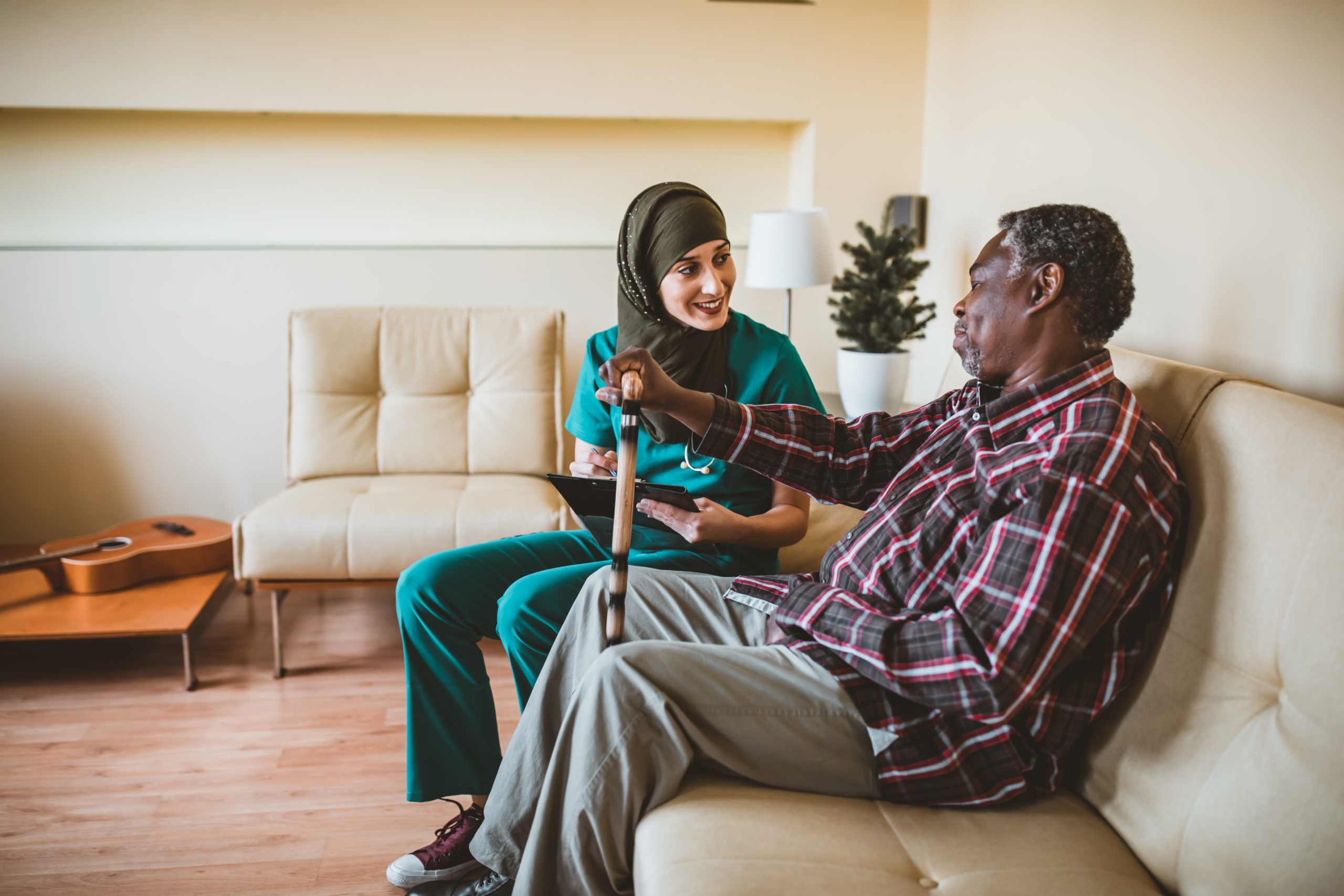
24 Jul What are the Leading Cultural Factors in Hospice Care?
What are the Leading Cultural Factors in Hospice Care?
Census projections indicate that by 2045, minorities will make up the majority of Americans. Currently, one in seven Americans was born in another country. As diversity within the U.S. increases, so does the need for culturally aware and inclusive healthcare services, particularly in the context of hospice care.
Significance of Cultural Factors in Hospice Care
Cultural factors play a significant role in shaping the experiences of individuals receiving hospice care, as they influence beliefs, values, communication styles, and the family dynamics surrounding end-of-life care. To provide holistic and patient-centered care that honors the diverse backgrounds and traditions of patients and their families, alongside the baseline important skills every hospice nurse should have, hospice teams must also have an understanding and awareness of cultural considerations.
By being cognizant of and respectful towards different cultures, providers can ensure that patients receive the compassionate, individualized care that they deserve. Some key cultural factors include:
Communication
Effective communication forms the foundation of quality hospice care. Healthcare providers must navigate language barriers while also paying attention to nonverbal communication and cultural norms which can impact patient interactions. Some communication strategies include:
- Using interpreters when necessary
- Providing written materials or visual aids
- Taking the time to understand, and then adapting communication to the preferred style of patients and their families
- Respecting privacy when communicating sensitive information
- Being attentive to non-verbal cues
Beliefs and Values
Cultural beliefs and values influence how individuals approach end-of-life care. Some cultures may prioritize family involvement in decision-making, while others may place importance on maintaining a sense of dignity and autonomy. Hospice providers should be sensitive to these differences and work collaboratively with patients and families to ensure that their cultural beliefs and values are respected and honored.
Family Dynamics
 In many cultures, family plays a central role in providing care at the end of life. Understanding the dynamics of the patient’s family structure and relationships is essential to providing holistic and culturally competent care. For example, in more collectivist societies, the concept of filial piety is important. In some cultures, children have a strong sense of obligation to take on primary caregiving responsibilities. In contrast, in individualistic societies, the responsibility of caregiving may be distributed more evenly among family members or outsourced to professional caregivers.
In many cultures, family plays a central role in providing care at the end of life. Understanding the dynamics of the patient’s family structure and relationships is essential to providing holistic and culturally competent care. For example, in more collectivist societies, the concept of filial piety is important. In some cultures, children have a strong sense of obligation to take on primary caregiving responsibilities. In contrast, in individualistic societies, the responsibility of caregiving may be distributed more evenly among family members or outsourced to professional caregivers.
In some cultures, such as Native American tribes, extended family members and even community members may play a significant role in providing emotional and practical support to hospice patients. This stands in contrast to cultures where caregiving responsibility lies with the immediate family members. Understanding and respecting these differences in family dynamics is crucial in meeting the needs of each patient and their family.
Religious and Spiritual Beliefs
Religious and spiritual beliefs can greatly influence an individual’s approach to death and dying. Hospice providers must be respectful of those beliefs and be prepared to provide spiritual support as needed. Understanding the rituals, practices, and customs associated with different religions can help providers to better support patients and their families. For example, honoring a patient’s spiritual beliefs could include accommodating religious practices or rituals that are important to the patient, such as prayer at certain times of day, or accommodating dietary restrictions or preferences. Collaborating with religious leaders from the patient’s faith community may also help to provide comfort at the end of life.
Strategies for Providing Culturally Competent Hospice Care
Since cultural factors play such a significant role in hospice care, what are some additional strategies for providing culturally competent care?
Know the community. Each community is different, and some hospice providers operate in more than one distinctly different area. For example, the Miami area has large Hispanic and Haitian populations, while the Seattle area has a large Asian community. Hospice providers should understand the communities in which they operate, including any underserved populations. In some areas, demographics can vary widely at the age level. It is especially important to understand the cultures comprising the hospice-eligible portion of the population in each area.
Ask questions. Take the time to ask open-ended questions about the patient’s cultural background, beliefs, values, and preferences related to end-of-life care. This information can help tailor care plans to align with the patient’s beliefs and practices.
Provide Cultural Competency training. This training can help providers develop a deeper understanding of different cultures, increase their awareness of their own biases and assumptions, and enhance their communication skills with patients from diverse backgrounds. With today’s technology ranging from hospice software to learning module programs, setting up quizzes, visual training libraries, and other educational portals is now easier than ever. By fostering a culture of continuous learning and growth in cultural competence, hospice providers can better meet the needs of the communities they serve.
Hire from the communities you serve. Hospice agencies can also better position themselves to serve culturally diverse patients by hiring staff with different cultural backgrounds. What does the composition of the workforce look like, relative to the patients served? Establishing a board of directors which reflects diversity within the community, and holding recruitment events aimed at attracting diverse candidates can also help hospices meet the unique needs of the communities they serve.
Collaborate with community resources. Fostering strong relationships with community organizations, religious leaders, and cultural groups, healthcare providers can gain valuable insights into cultural beliefs, practices, and preferences in their communities. These partnerships facilitate a more holistic approach to care, and can provide additional support, guidance, and expertise in navigating cultural differences.
The Takeaway
By knowing the needs of the unique communities in which they operate and by being cognizant of cultural factors in hospice care, providers can enhance their ability to deliver care that promotes comfort, dignity, and respect for all individuals at the end of life.
Author’s Note: Views, information, and guidance in this blog are intended for information only. We are not rendering legal, financial, accounting, medical, or other professional advice. Alora disclaims any liability to any third party and cannot make any guarantee related to the content.
References:
Related blogs:
- What are the key performance indicators for hospice agencies?
- What are the top strategies to grow your hospice referrals?
- What are the crucial skills for home health and hospice hiring?
- Selecting the best caregiver for end-of-life care

Alora is engineered to keep Hospice agencies running at peak efficiency. From dashboards and tools tracking the most critical components of care, to our team providing you with the highest level of agency training and support, Alora’s easy to use system streamlines clinical documentation, tracks patient care, manages billing operations, and ensures regulatory compliance.

No Comments